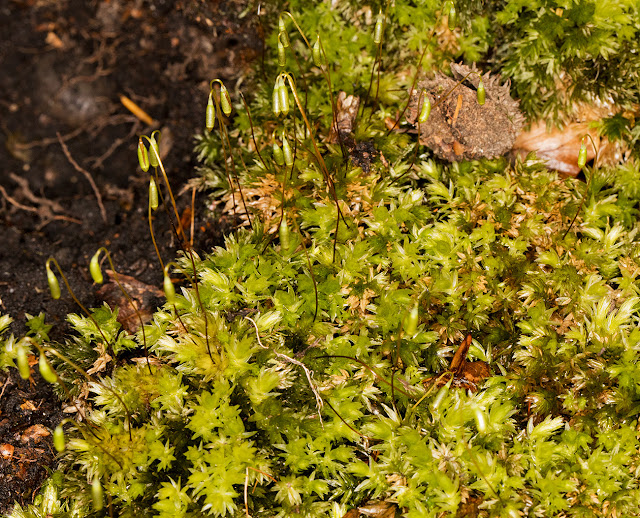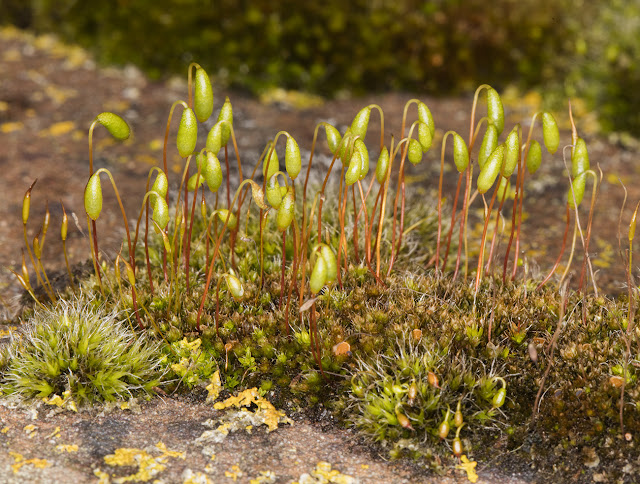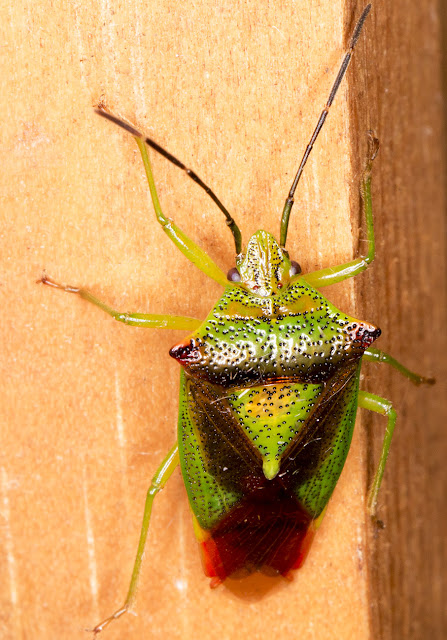 |
| Pseudoscleropodium purum, Neat Feather-Moss. Keston Common, 3 March 2016 |
In the woods are some mosses that form branching mats on the ground.
This one, Pseudoscleropodium purum, likes a bit of light, and covers the ground beside paths or at the edge of a wood.
The vernacular name suggests the neat tips to the stems and branches.
As with many plants, the key to correct identification of mosses is learning which features make them different from other similar species. Those plump stems coming to a point are the key to this one.
 |
| Kindbergia praelonga, Common Feather-moss. Keston Common, 3 March 2016 |
This one, Kindbergia praelonga, is superficially rather similar, covering - in this case - a low stump with feathery branches.
But it is rather smaller and finer than Pseudoscleropodium purum, looks more feathery, and does not have those plump tips.
A close inspection shows that the leaves on the main stem are much wider than those on the branches. That's a useful distinguishing feature for this species, but you will probably need a hand lens (or magnified photo) to see it.
 |
| Mnium hornum, Swan's-neck Thyme-moss. Keston Common, 3 March 2016 |
Mnium hornum covers large patches of ground in one section of Keston Common, a path through an old gravel pit. In habit it is more like the wall mosses I showed recently than the branching mats of the other two shown here. It is growing among beeches, as you can see from the piece of beech mast in the photo.
Last for today ..
 |
| Dicranum scoparium, Broom Fork-moss. Keston Common, 5 March 2016 |
I came across some patches of this pretty moss whole on my way to photograph something else, so I was pleasantly surprised. It's a common woodland moss, but that does not mean you see it everywhere. It has a very distinctive spiky habit ...
 |
| Dicranum scoparium, Broom Fork-moss. Keston Common, 5 March 2016 |
In fact, the leaf tips are almost triangular in cross-section and are slightly rough.























